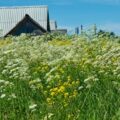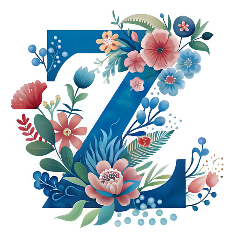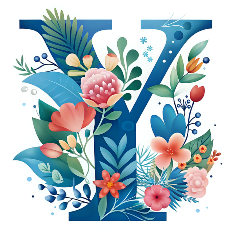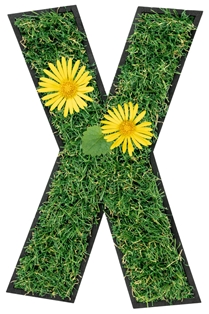Flowers that start with the letter “B” are a diverse and vibrant group, offering a wide array of colors, shapes, and sizes. These blooms can be found in gardens, landscapes, and wild settings, providing beauty and interest throughout the seasons. From the striking Bird of Paradise with its exotic appearance to the delicate Bluebell carpeting woodland floors, each flower has its unique charm and horticultural appeal. Some, like the Butterfly Bush, attract pollinators, making them valuable for supporting local ecosystems. Others, such as the Bigleaf Hydrangea, are prized for their showy, long-lasting blooms. Whether you are a seasoned gardener or a nature enthusiast, flowers that start with “B” offer something for everyone, enhancing gardens and natural spaces with their beauty and variety. Exploring these flowers can inspire new ideas for planting and cultivating your own botanical paradise.
Byzantine Gladiolus
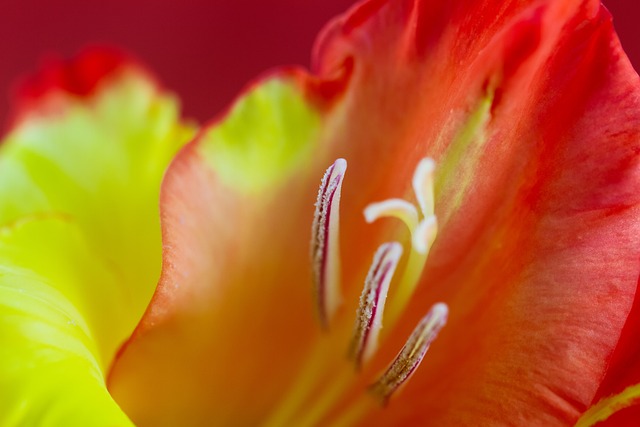
- Description: The Byzantine Gladiolus (Gladiolus communis subsp. byzantinus) is a strikingly beautiful flowering plant known for its vibrant, magenta-colored blossoms. Native to the Mediterranean region, it blooms in late spring to early summer.
- Characteristics: It has sword-shaped leaves and tall flower spikes that can reach up to 3 feet in height. Each spike is adorned with several funnel-shaped flowers.
- Cultivation: Prefers well-drained soil and full sun. Ideal for borders and cutting gardens. Requires lifting and storing in colder climates.
Byblis
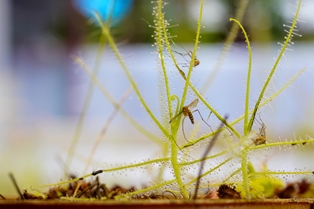
- Description: Byblis, commonly known as Rainbow Plants, are carnivorous plants native to Australia and New Guinea. They capture insects with their sticky, glandular leaves.
- Characteristics: They have slender, grass-like leaves covered in mucilaginous glands that trap prey. The flowers are typically purple or pink.
- Cultivation: Requires a sunny position and well-drained, acidic soil. They are often grown in greenhouses or terrariums.
Buttonwood
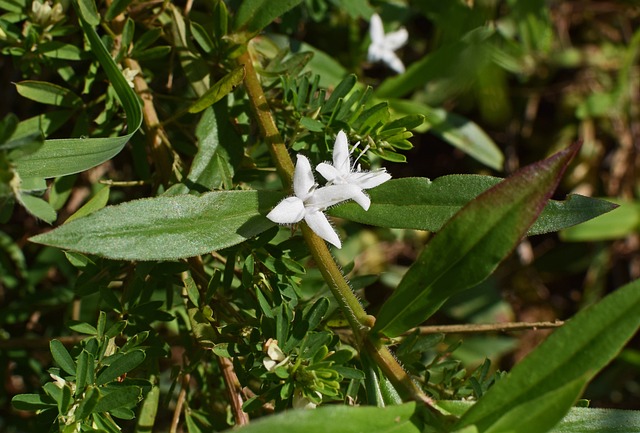
- Description: Buttonwood (Conocarpus erectus), also known as Button Mangrove, is a coastal tree or shrub found in tropical and subtropical regions.
- Characteristics: It has leathery, oblong leaves and small, inconspicuous flowers. The fruit is a button-like, woody cone.
- Cultivation: Tolerates a range of soil types, including saline and alkaline conditions. Used in landscaping for hedges and windbreaks.
Buttonbush
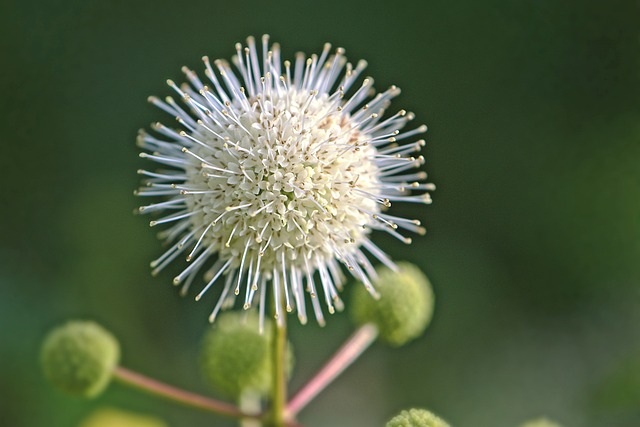
- Description: Buttonbush (Cephalanthus occidentalis) is a deciduous shrub native to North America, known for its spherical clusters of white flowers.
- Characteristics: It has glossy, green leaves and unique, globular flower heads that attract bees and butterflies. The fruits are round and resemble small buttons.
- Cultivation: Prefers wet soils and full sun to partial shade. Commonly found in wetlands and along waterways.
Butterweed
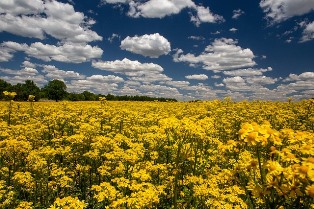
- Description: Butterweed (Packera glabella) is a spring-blooming wildflower native to North America, known for its bright yellow flowers.
- Characteristics: It has deeply lobed, dark green leaves and clusters of daisy-like yellow flowers.
- Cultivation: Thrives in moist, rich soils and full sun to partial shade. Often found in floodplains and disturbed areas.
Butterfly Pea
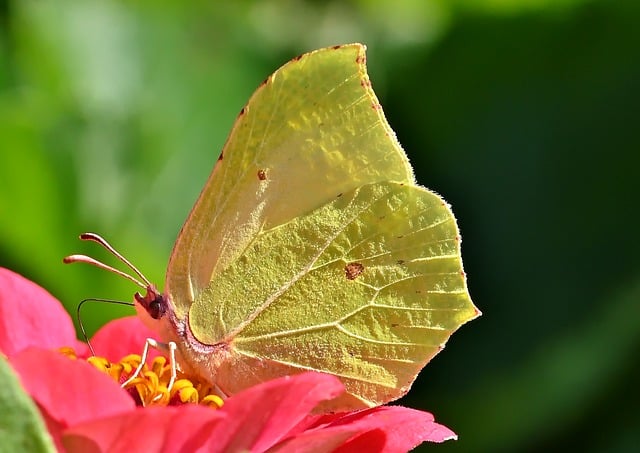
- Description: Butterfly Pea (Clitoria ternatea) is a tropical vine known for its vivid blue, butterfly-shaped flowers.
- Characteristics: It has pinnate leaves and solitary flowers that can be blue, white, or purple. The plant also produces flat, green pods.
- Cultivation: Prefers well-drained soil and full sun to partial shade. Commonly used in tea and natural food coloring.
Butterfly Bush
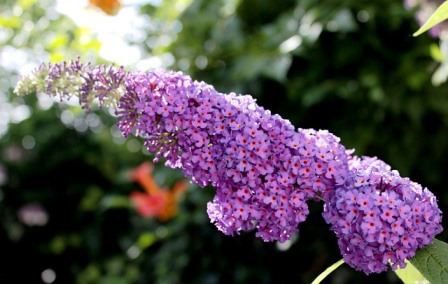
- Description: Butterfly Bush (Buddleja davidii) is a deciduous shrub known for attracting butterflies with its fragrant, cone-shaped flower clusters.
- Characteristics: It has lance-shaped leaves and flower spikes in shades of purple, pink, white, or yellow.
- Cultivation: Thrives in well-drained soil and full sun. Pruning encourages more prolific blooming.
Buttercup
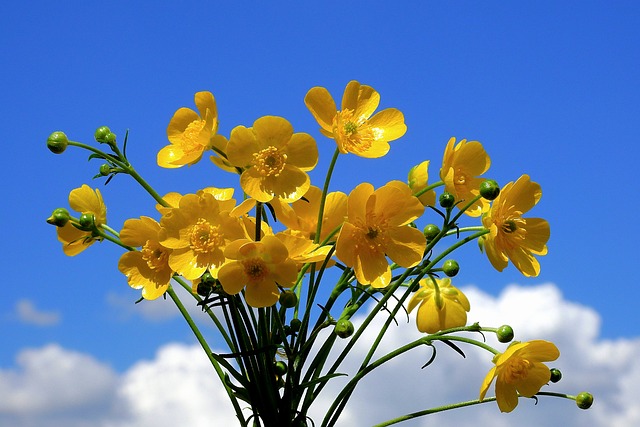
- Description: Buttercup (Ranunculus spp.) is a genus of flowering plants known for their bright yellow, cup-shaped flowers.
- Characteristics: They have glossy, lobed leaves and flowers that vary from simple to double forms.
- Cultivation: Prefers moist, well-drained soil and full sun to partial shade. Often found in meadows and woodland areas.
Butter Daisy
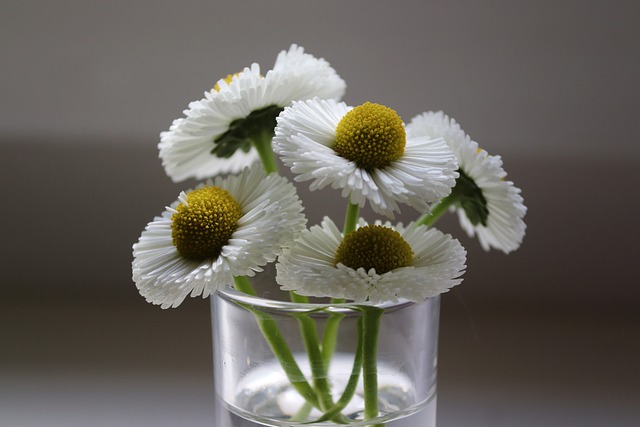
- Description: Butter Daisy (Melampodium divaricatum) is a hardy annual known for its cheerful, yellow daisy-like flowers.
- Characteristics: It has bushy, green foliage and profuse blooms that last throughout the summer.
- Cultivation: Thrives in well-drained soil and full sun. Low maintenance and drought-tolerant once established.
Burro’s Tail
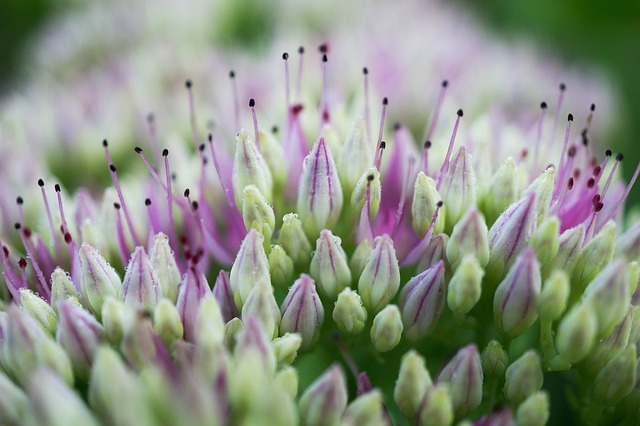
- Description: Burro’s Tail (Sedum morganianum) is a popular succulent known for its trailing, tail-like stems covered in fleshy, blue-green leaves.
- Characteristics: It produces small, star-shaped pink or red flowers at the ends of its stems.
- Cultivation: Prefers well-drained soil and bright, indirect light. Ideal for hanging baskets.
Burnet
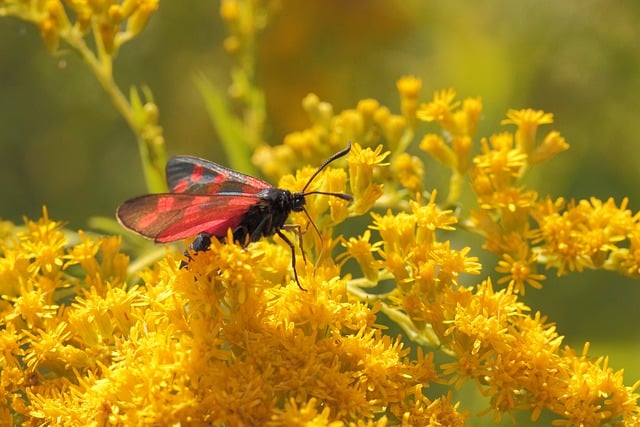
- Description: Burnet (Sanguisorba spp.) is a perennial herb known for its fern-like foliage and bottlebrush-like flower spikes.
- Characteristics: It has pinnate leaves and small, dense flower heads in shades of red, pink, or white.
- Cultivation: Prefers well-drained soil and full sun to partial shade. Often used in herb gardens and for ornamental purposes.
Burgundy Iceberg
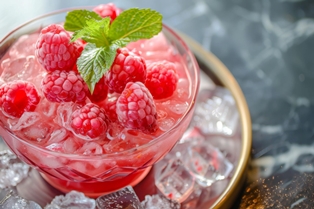
- Description: Burgundy Iceberg (Rosa ‘Burgundy Iceberg’) is a stunning rose variety known for its deep burgundy, semi-double flowers.
- Characteristics: It has glossy, dark green foliage and blooms continuously from spring to fall.
- Cultivation: Prefers well-drained soil and full sun. Resistant to common rose diseases and ideal for borders and containers.
Burdock
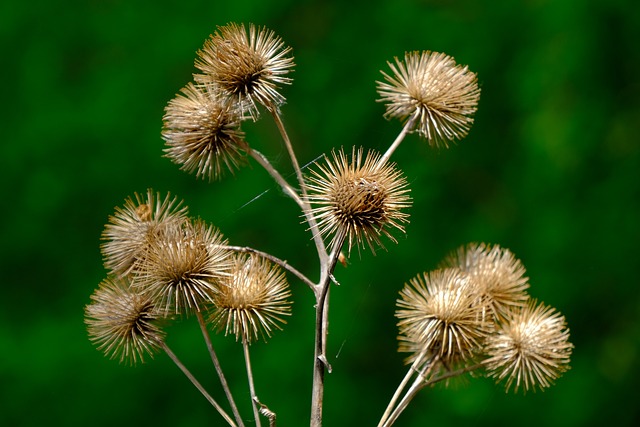
- Description: Burdock (Arctium spp.) is a biennial plant known for its large, heart-shaped leaves and prickly burrs.
- Characteristics: It has purple, thistle-like flowers and burrs that stick to clothing and animal fur.
- Cultivation: Thrives in well-drained soil and full sun to partial shade. Often found in disturbed areas and waste places.
Bur Marigold
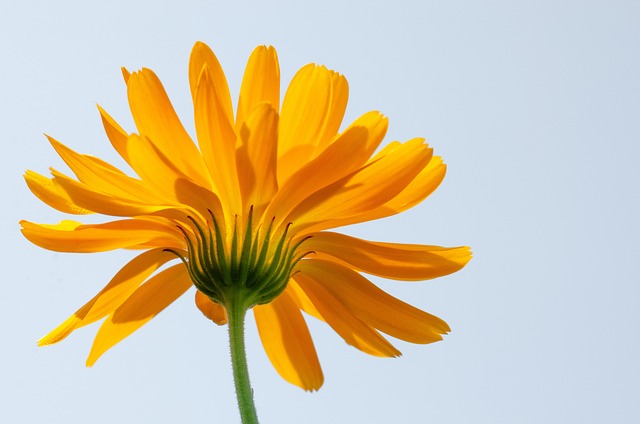
- Description: Bur Marigold (Bidens spp.) is a genus of flowering plants known for their bright yellow, daisy-like flowers.
- Characteristics: They have pinnate leaves and flowers with prominent central discs and ray florets.
- Cultivation: Prefers moist, well-drained soil and full sun. Commonly found in wetlands and along waterways.
Bunchberry
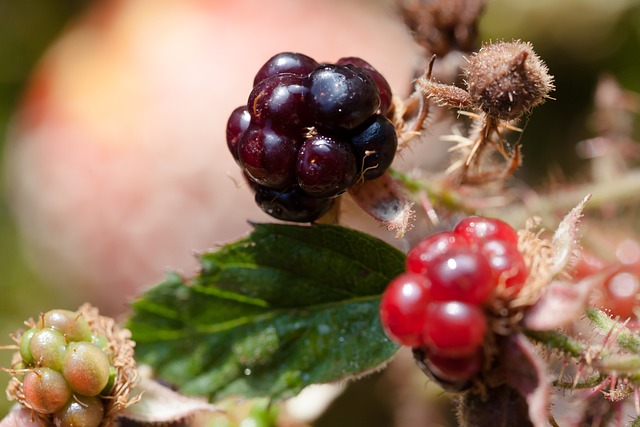
- Description: Bunchberry (Cornus canadensis) is a low-growing perennial known for its white, dogwood-like flowers and bright red berries.
- Characteristics: It has whorled leaves and small, clustered flowers that give way to attractive berries.
- Cultivation: Prefers moist, acidic soil and partial to full shade. Often found in woodland areas.
Bull Thistle
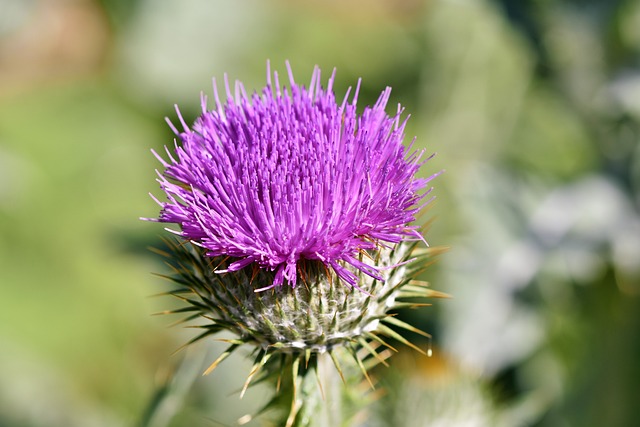
- Description: Bull Thistle (Cirsium vulgare) is a biennial plant known for its spiny leaves and purple, thistle-like flowers.
- Characteristics: It has deeply lobed, spiny leaves and large, solitary flower heads.
- Cultivation: Thrives in well-drained soil and full sun. Often considered a weed in disturbed areas.
Bulbous Buttercup
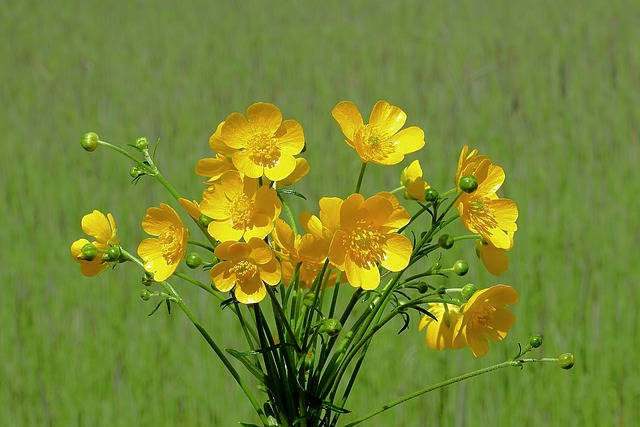
- Description: Bulbous Buttercup (Ranunculus bulbosus) is a perennial herb known for its bright yellow, cup-shaped flowers.
- Characteristics: It has hairy, deeply divided leaves and flowers with a glossy appearance.
- Cultivation: Prefers well-drained soil and full sun to partial shade. Commonly found in meadows and grassy areas.
Bulbine Lily
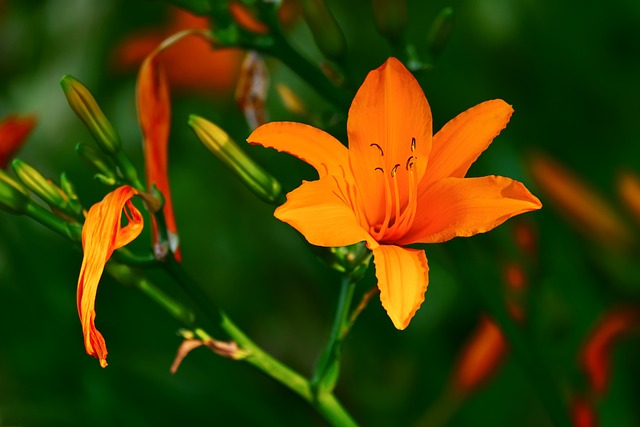
- Description: Bulbine Lily (Bulbine bulbosa) is a perennial plant known for its yellow, star-shaped flowers and grass-like foliage.
- Characteristics: It has succulent leaves and flower spikes that bloom in spring and summer.
- Cultivation: Prefers well-drained soil and full sun. Drought-tolerant and ideal for rock gardens.
Bulbine
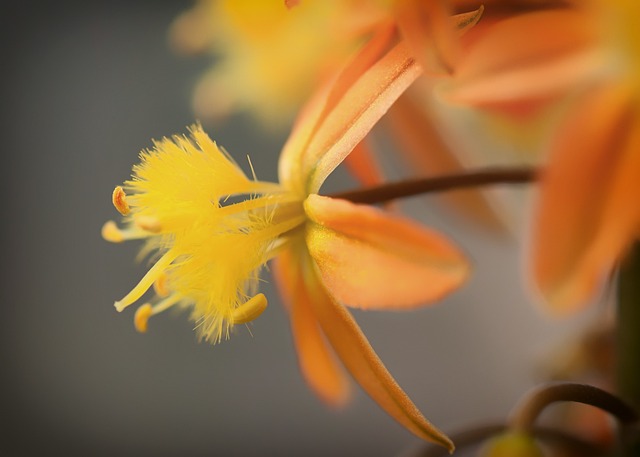
- Description: Bulbine (Bulbine frutescens) is a succulent perennial known for its orange or yellow, star-shaped flowers.
- Characteristics: It has fleshy, grass-like leaves and long, slender flower spikes.
- Cultivation: Thrives in well-drained soil and full sun. Drought-tolerant and commonly used in xeriscaping.
Bugloss
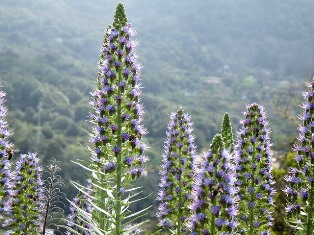
- Description: Bugloss (Anchusa spp.) is a genus of flowering plants known for their vibrant blue flowers.
- Characteristics: They have rough, hairy leaves and clusters of tubular flowers.
- Cultivation: Prefers well-drained soil and full sun. Often found in meadows and grasslands.
Bugbane
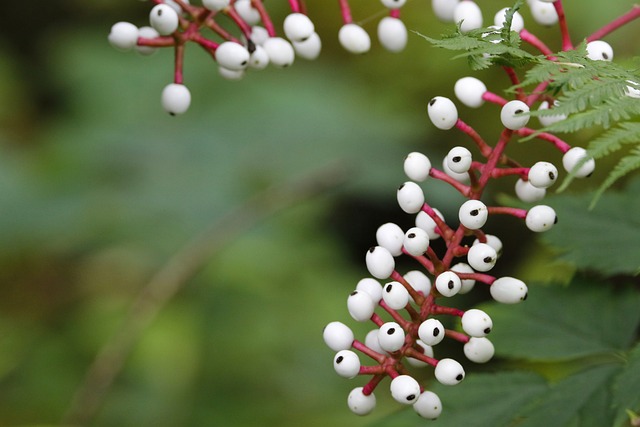
- Description: Bugbane (Actaea spp.) is a genus of perennial plants known for their tall, white flower spikes and fern-like foliage.
- Characteristics: They have deeply divided leaves and fragrant, bottlebrush-like flower spikes.
- Cultivation: Prefers moist, well-drained soil and partial to full shade. Often used in woodland gardens.
Buddleja
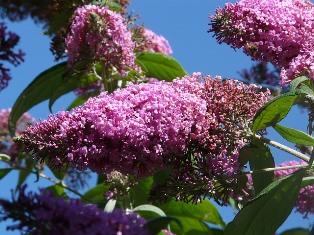
- Description: Buddleja is a genus of flowering plants known for their fragrant, cone-shaped flower clusters that attract butterflies.
- Characteristics: They have lance-shaped leaves and flower spikes in shades of purple, pink, white, or yellow.
- Cultivation: Thrives in well-drained soil and full sun. Pruning encourages more prolific blooming.
Buddleia
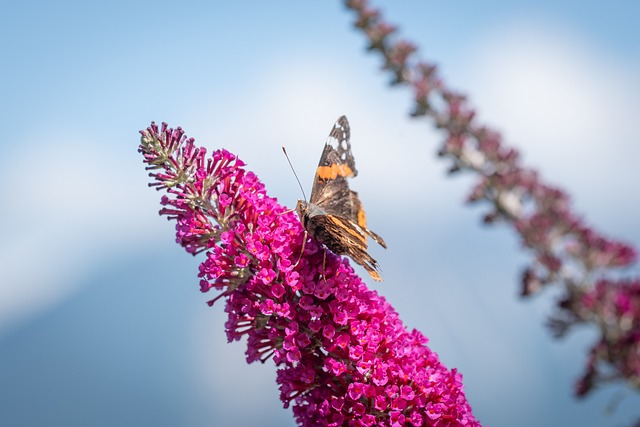
- Description: Buddleia, also known as Butterfly Bush, is a genus of flowering plants known for their fragrant, cone-shaped flower clusters that attract butterflies.
- Characteristics: They have lance-shaped leaves and flower spikes in shades of purple, pink, white, or yellow.
- Cultivation: Thrives in well-drained soil and full sun. Pruning encourages more prolific blooming.
Buckbean
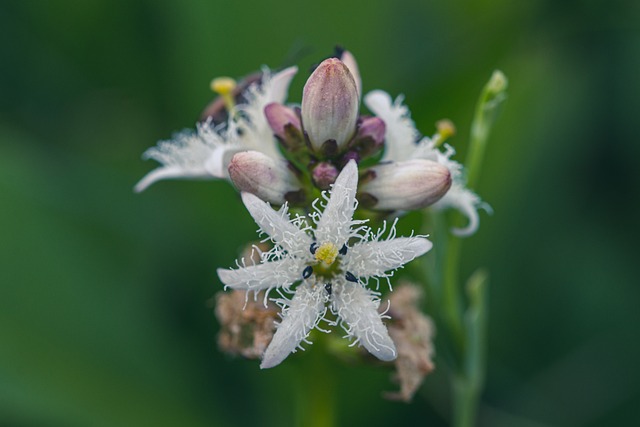
- Description: Buckbean (Menyanthes trifoliata) is a perennial aquatic plant known for its white, fringed flowers and trifoliate leaves.
- Characteristics: It has compound leaves with three leaflets and clusters of star-shaped flowers.
- Cultivation: Prefers wet, boggy soils and full sun to partial shade. Commonly found in wetlands and along water edges.
Buchu
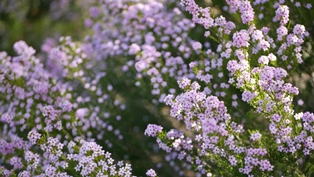
- Description: Buchu (Agathosma spp.) is a genus of aromatic shrubs native to South Africa, known for their medicinal properties.
- Characteristics: They have small, leathery leaves and clusters of white or pink flowers.
- Cultivation: Prefers well-drained soil and full sun. Used in traditional medicine and as a flavoring agent.
Bubble Plant

- Description: Bubble Plant (Cardamine hirsuta), also known as Hairy Bittercress, is a small annual known for its explosive seed pods.
- Characteristics: It has rosettes of pinnate leaves and small, white flowers. The seed pods burst open when ripe, dispersing seeds.
- Cultivation: Thrives in moist, well-drained soil and full sun to partial shade. Often considered a weed.
Brush Cherry
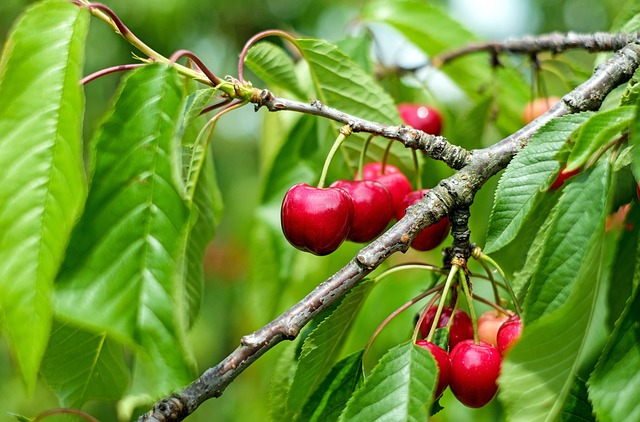
- Description: Brush Cherry (Syzygium australe) is an evergreen shrub or small tree known for its glossy foliage and white, fluffy flowers.
- Characteristics: It has ovate leaves and clusters of white flowers followed by red or purple berries.
- Cultivation: Prefers well-drained soil and full sun to partial shade. Often used as a hedge or topiary plant.
Brunnera
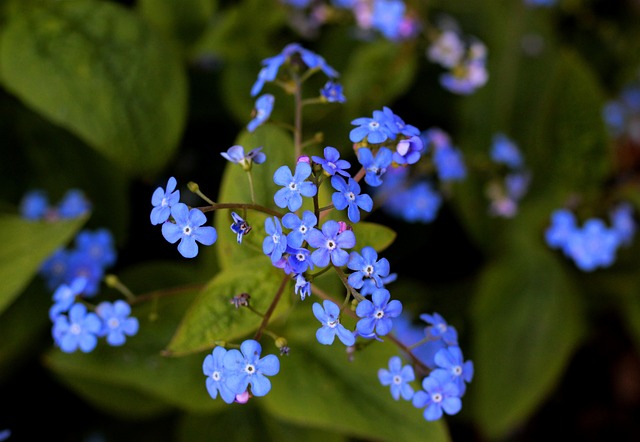
- Description: Brunnera (Brunnera macrophylla) is a perennial plant known for its heart-shaped leaves and forget-me-not-like blue flowers.
- Characteristics: It has large, coarse leaves and clusters of small, blue flowers that bloom in spring.
- Cultivation: Prefers moist, well-drained soil and partial to full shade. Ideal for woodland gardens.
Brownea
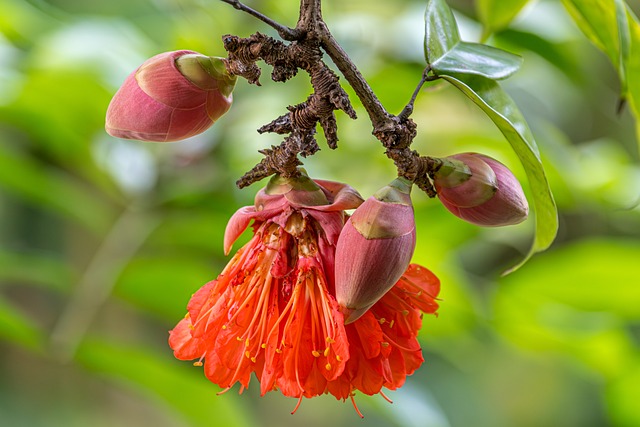
- Description: Brownea is a genus of flowering trees known for their large, showy clusters of bright red or orange flowers.
- Characteristics: They have compound leaves and pendulous flower clusters that attract hummingbirds.
- Cultivation: Prefers well-drained soil and full sun to partial shade. Often grown as an ornamental tree in tropical regions.
Brown Eyed Susan
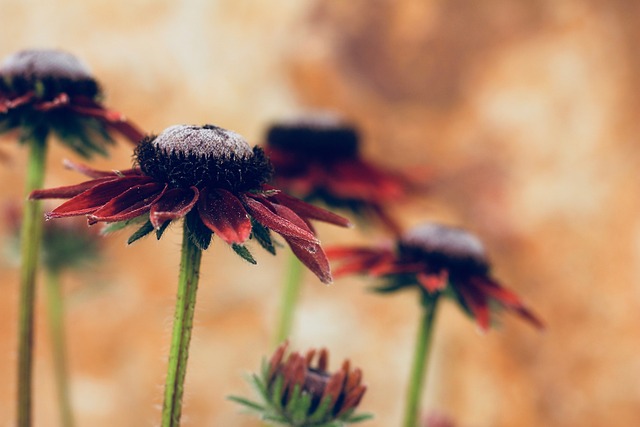
- Description: Brown Eyed Susan (Rudbeckia triloba) is a biennial or short-lived perennial known for its yellow, daisy-like flowers with dark centers.
- Characteristics: It has deeply lobed leaves and multiple flower stems, each bearing several blooms.
- Cultivation: Thrives in well-drained soil and full sun. Attracts pollinators and ideal for wildflower gardens.
Browallia
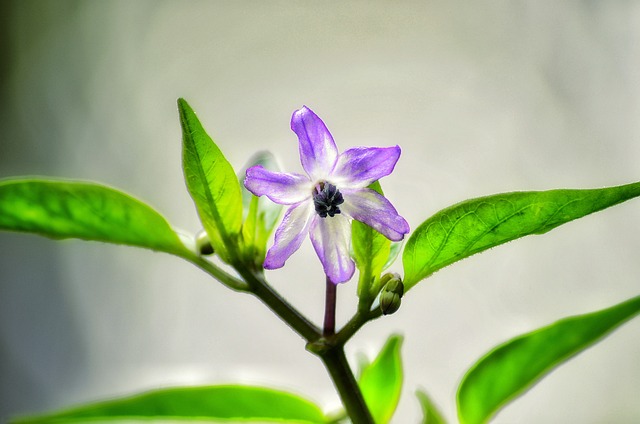
- Description: Browallia (Browallia spp.) is a genus of flowering plants known for their bright blue, violet, or white flowers.
- Characteristics: They have bushy, green foliage and tubular flowers that bloom throughout the summer.
- Cultivation: Prefers well-drained soil and partial shade. Often grown as an annual in borders and containers.
Broom
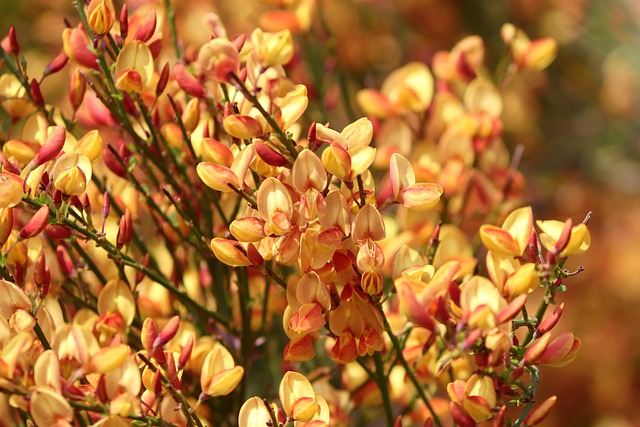
- Description: Broom (Cytisus spp.) is a genus of flowering shrubs known for their bright yellow, pea-like flowers.
- Characteristics: They have slender, green stems and small, trifoliate leaves.
- Cultivation: Thrives in well-drained soil and full sun. Often used in landscaping for erosion control.
Bronze Fennel
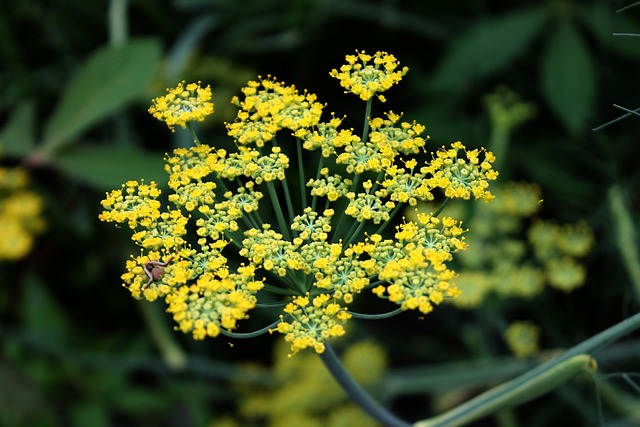
- Description: Bronze Fennel (Foeniculum vulgare ‘Purpureum’) is a perennial herb known for its feathery, bronze-colored foliage.
- Characteristics: It has finely divided leaves and clusters of small, yellow flowers.
- Cultivation: Prefers well-drained soil and full sun. Attracts pollinators and often used in herb gardens.
Bristly Greenbrier
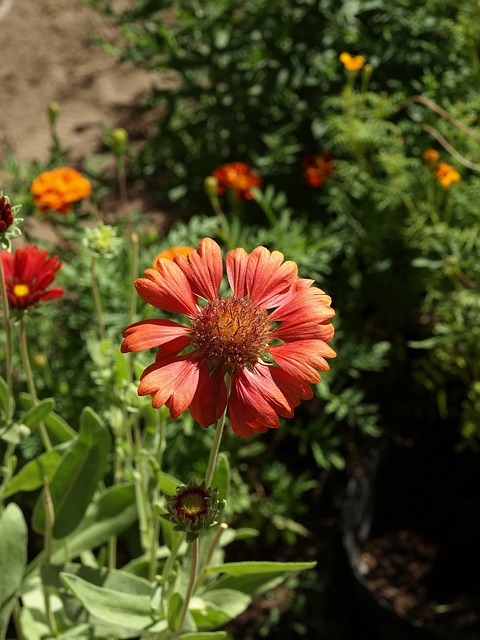
- Description: Bristly Greenbrier (Smilax tamnoides) is a perennial vine known for its spiny stems and glossy, heart-shaped leaves.
- Characteristics: It produces small, greenish flowers followed by blue-black berries.
- Cultivation: Thrives in well-drained soil and full sun to partial shade. Often found in woodlands and along fences.
Bristleleaf
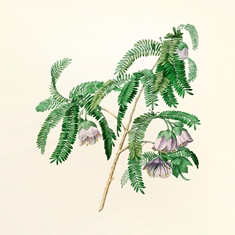
- Description: Bristleleaf (Haplopappus spp.) is a genus of flowering plants known for their yellow, daisy-like flowers.
- Characteristics: They have bristly, narrow leaves and solitary flower heads.
- Cultivation: Prefers well-drained soil and full sun. Often found in dry, rocky areas.
Bright Eyes
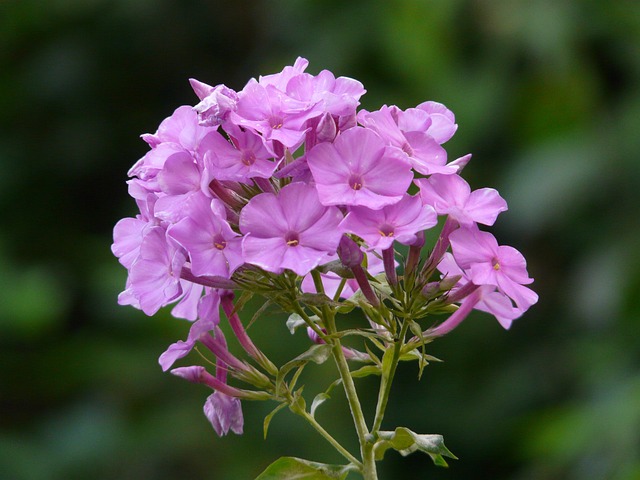
- Description: Bright Eyes (Phlox paniculata ‘Bright Eyes’) is a perennial phlox variety known for its pink flowers with darker centers.
- Characteristics: It has lance-shaped leaves and large, fragrant flower clusters that bloom in summer.
- Cultivation: Prefers well-drained soil and full sun to partial shade. Attracts butterflies and ideal for borders.
Bridal Veil
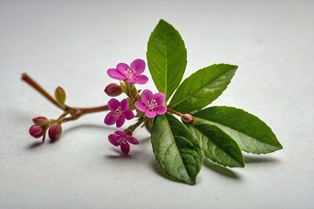
- Description: Bridal Veil (Gibasis geniculata) is a trailing plant known for its delicate, white flowers and thin, green stems.
- Characteristics: It has small, ovate leaves and profuse, tiny white flowers that give a bridal veil appearance.
- Cultivation: Prefers well-drained soil and bright, indirect light. Often grown as a hanging plant.
Breadfruit
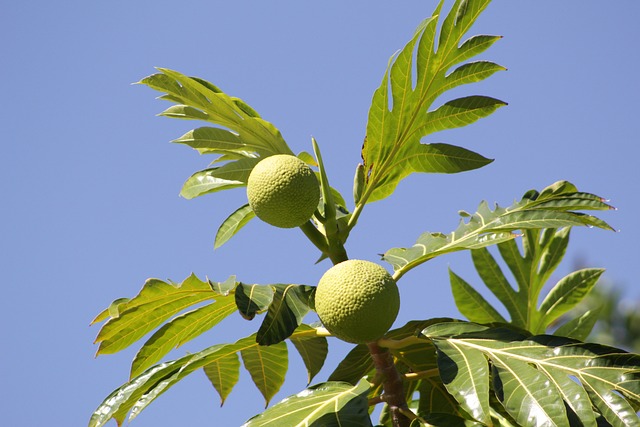
- Description: Breadfruit (Artocarpus altilis) is a tropical tree known for its large, starchy fruit that resembles bread when cooked.
- Characteristics: It has large, lobed leaves and produces round, green fruits with a bumpy surface.
- Cultivation: Prefers well-drained soil and full sun. Grown for its edible fruit and as a shade tree.
Brazilian Plume Flower
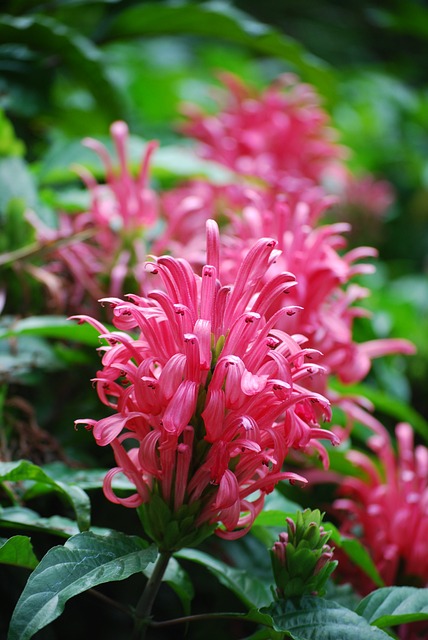
- Description: Brazilian Plume Flower (Justicia carnea) is a tropical shrub known for its showy, pink flower spikes.
- Characteristics: It has broad, dark green leaves and clusters of tubular flowers that bloom in summer.
- Cultivation: Thrives in well-drained soil and partial shade. Often grown as an ornamental plant in tropical regions.
Bramble
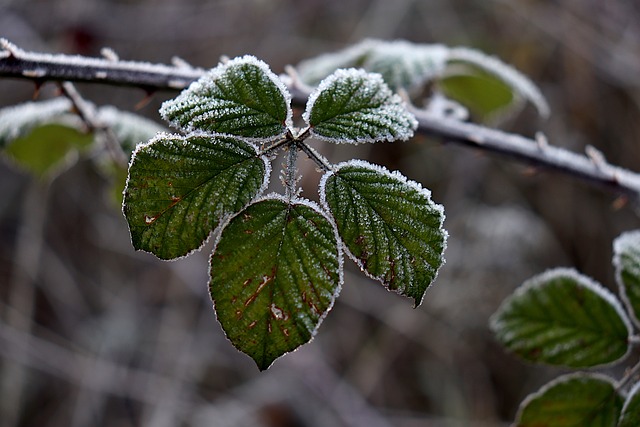
- Description: Bramble (Rubus spp.) is a genus of shrubs known for their thorny stems and edible berries, such as blackberries and raspberries.
- Characteristics: They have compound leaves and white or pink flowers followed by clusters of small, juicy fruits.
- Cultivation: Prefers well-drained soil and full sun to partial shade. Often grown for their fruit.
Brachycome
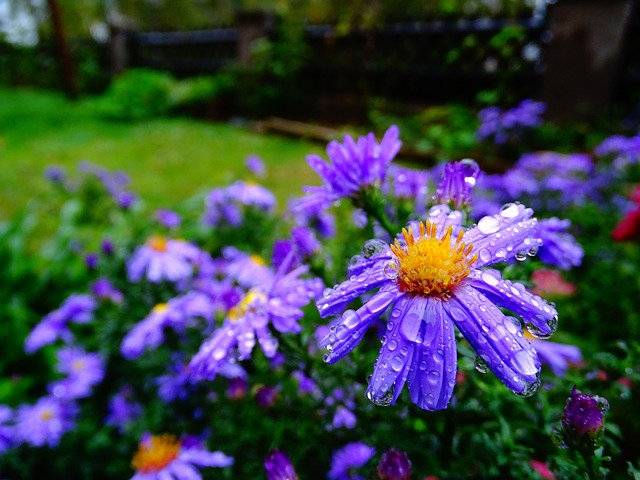
- Description: Brachycome (Brachyscome spp.) is a genus of flowering plants known for their daisy-like flowers in shades of blue, pink, or white.
- Characteristics: They have finely divided leaves and profuse blooms that last throughout the summer.
- Cultivation: Thrives in well-drained soil and full sun. Ideal for borders, rock gardens, and containers.
Boxwood
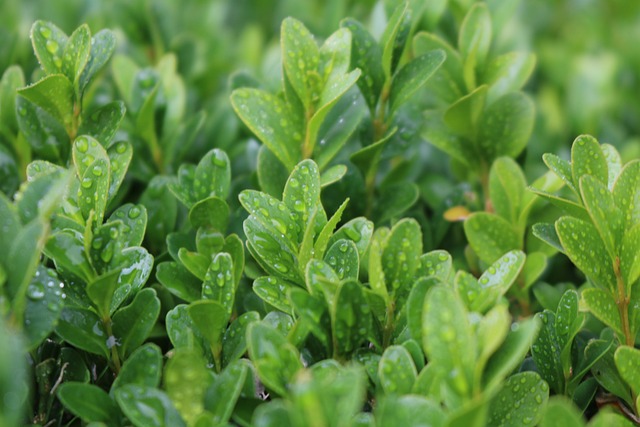
- Description: Boxwood (Buxus spp.) is a genus of evergreen shrubs known for their dense, green foliage and slow growth.
- Characteristics: They have small, oval leaves and compact, bushy growth habits.
- Cultivation: Prefers well-drained soil and full sun to partial shade. Often used in formal hedges and topiary.
Bowstring Hemp
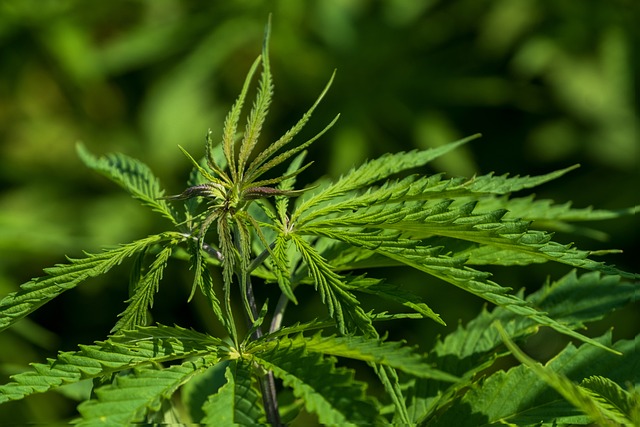
- Description: Bowstring Hemp (Sansevieria trifasciata), also known as Snake Plant, is a hardy succulent known for its upright, sword-shaped leaves.
- Characteristics: It has stiff, dark green leaves with light green or yellow margins.
- Cultivation: Thrives in well-drained soil and low to bright light. Drought-tolerant and ideal for indoor settings.
Bougainvillea
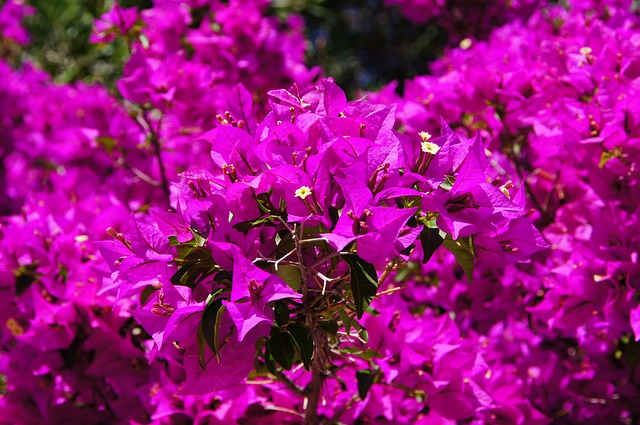
- Description: Bougainvillea is a genus of flowering plants known for their vibrant, papery bracts that surround small, inconspicuous flowers.
- Characteristics: They have thorny stems and colorful bracts in shades of pink, purple, red, orange, or white.
- Cultivation: Prefers well-drained soil and full sun. Often grown as a climbing vine or in hanging baskets.
Bottlebrush Buckeye
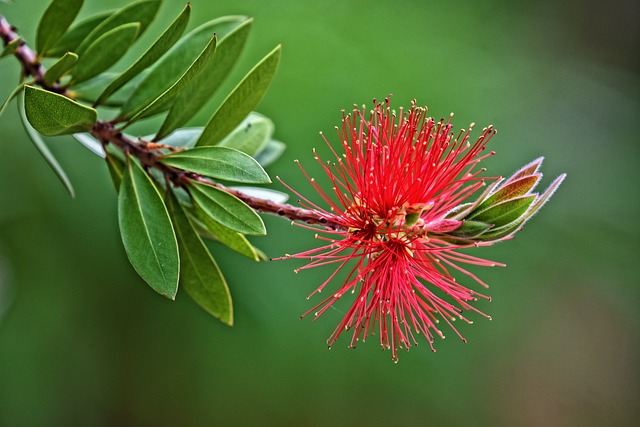
- Description: Bottlebrush Buckeye (Aesculus parviflora) is a deciduous shrub known for its long, cylindrical flower spikes that resemble bottlebrushes.
- Characteristics: It has palmate leaves and white flower spikes that bloom in summer.
- Cultivation: Prefers well-drained soil and partial shade. Often used in woodland gardens.
Bottlebrush
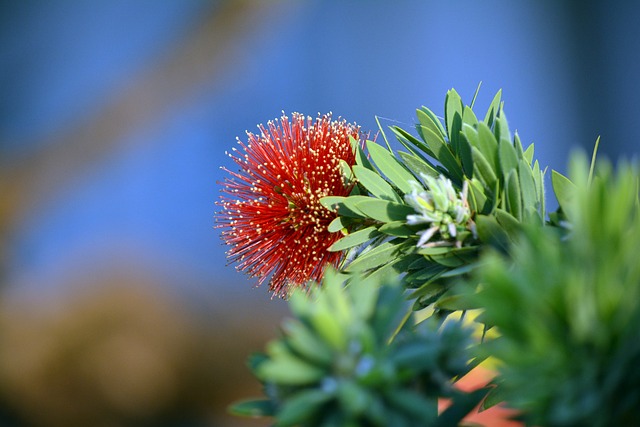
- Description: Bottlebrush (Callistemon spp.) is a genus of shrubs and trees known for their distinctive, brush-like flower spikes.
- Characteristics: They have narrow, evergreen leaves and cylindrical flower spikes in shades of red, pink, or white.
- Cultivation: Thrives in well-drained soil and full sun. Attracts pollinators and often used in landscaping.
Bottle Gentian
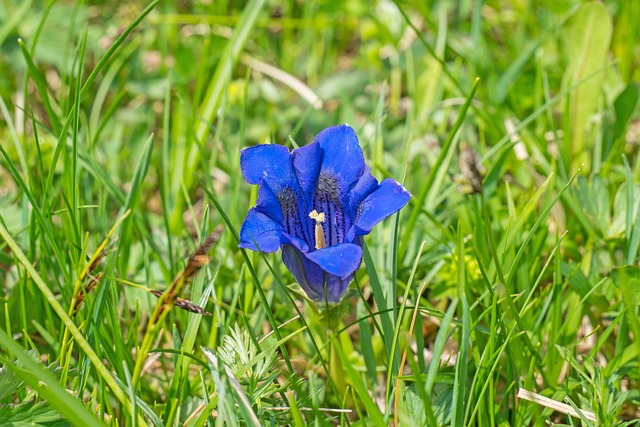
- Description: Bottle Gentian (Gentiana andrewsii) is a perennial plant known for its bottle-shaped, deep blue flowers.
- Characteristics: It has lance-shaped leaves and clusters of closed, tubular flowers that bloom in late summer to fall.
- Cultivation: Prefers moist, well-drained soil and partial to full shade. Often found in wetlands and moist meadows.
Bottle Brush
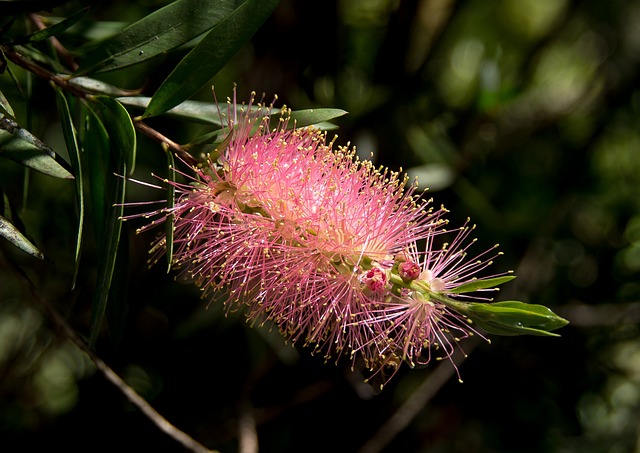
- Description: Bottle Brush (Callistemon spp.) is a genus of shrubs and trees known for their distinctive, brush-like flower spikes.
- Characteristics: They have narrow, evergreen leaves and cylindrical flower spikes in shades of red, pink, or white.
- Cultivation: Thrives in well-drained soil and full sun. Attracts pollinators and often used in landscaping.
Boronia
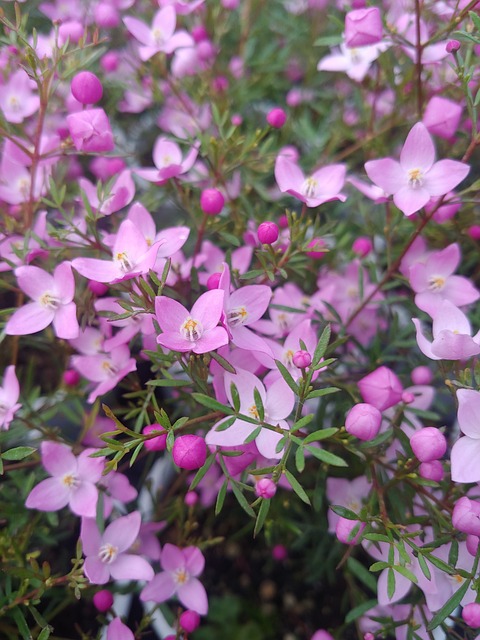
- Description: Boronia is a genus of flowering plants native to Australia, known for their fragrant, star-shaped flowers.
- Characteristics: They have pinnate leaves and flowers in shades of pink, white, or yellow.
- Cultivation: Prefers well-drained soil and full sun to partial shade. Often used in rock gardens and for cut flowers.
Borage
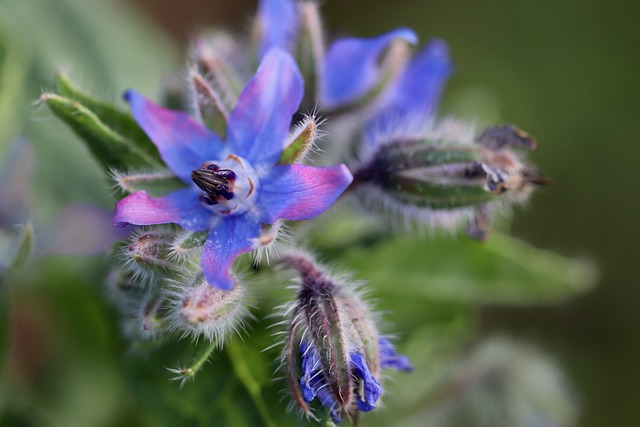
- Description: Borage (Borago officinalis) is an annual herb known for its star-shaped, blue flowers and edible leaves.
- Characteristics: It has hairy, rough leaves and clusters of bright blue flowers that attract pollinators.
- Cultivation: Thrives in well-drained soil and full sun. Often grown in herb gardens and for medicinal purposes.
Bog Rosemary
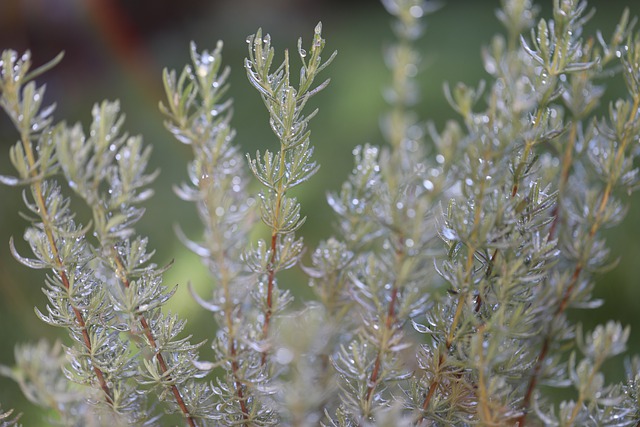
- Description: Bog Rosemary (Andromeda polifolia) is a low-growing, evergreen shrub known for its pink, bell-shaped flowers.
- Characteristics: It has narrow, leathery leaves and clusters of small, pink flowers that bloom in spring.
- Cultivation: Prefers acidic, moist soils and full sun to partial shade. Often found in bogs and wetland areas.
Bog Bean
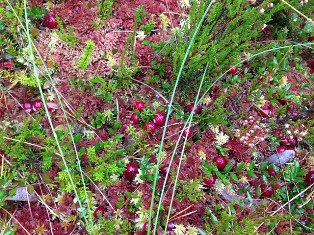
- Description: Bog Bean (Menyanthes trifoliata) is a perennial aquatic plant known for its white, fringed flowers and trifoliate leaves.
- Characteristics: It has compound leaves with three leaflets and clusters of star-shaped flowers.
- Cultivation: Prefers wet, boggy soils and full sun to partial shade. Commonly found in wetlands and along water edges.
Blueweed
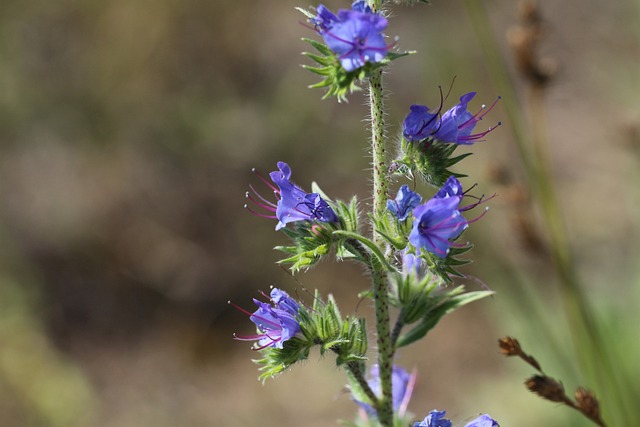
- Description: Blueweed (Echium vulgare) is a biennial plant known for its tall spikes of bright blue flowers.
- Characteristics: It has rough, hairy leaves and flower spikes that bloom from late spring to early summer.
- Cultivation: Thrives in well-drained soil and full sun. Often found in meadows and waste places.
Bluets
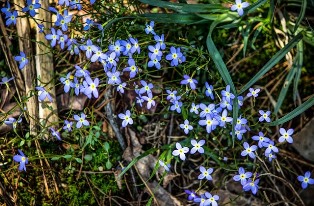
- Description: Bluets (Houstonia caerulea) are small, perennial wildflowers known for their delicate, blue or white flowers.
- Characteristics: They have slender stems and clusters of tiny, four-petaled flowers that bloom in spring.
- Cultivation: Prefers moist, well-drained soil and full sun to partial shade. Often found in meadows and woodland areas.
Blue-Eyed Mary
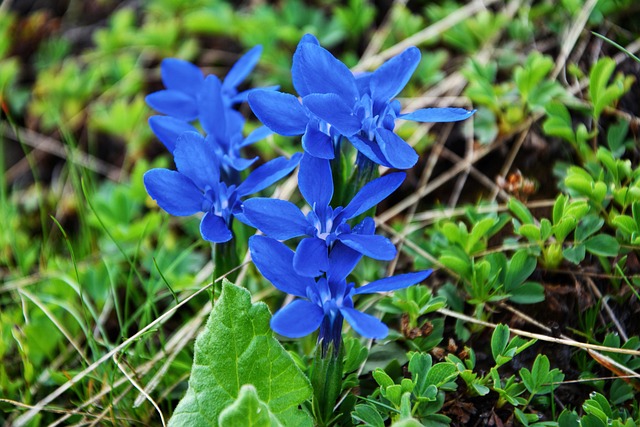
- Description: Blue-Eyed Mary (Collinsia verna) is an annual wildflower known for its two-toned blue and white flowers.
- Characteristics: It has opposite, lance-shaped leaves and clusters of small, bilobed flowers.
- Cultivation: Thrives in moist, well-drained soil and partial shade. Often found in woodland areas and along streams.
Blue-eyed Grass
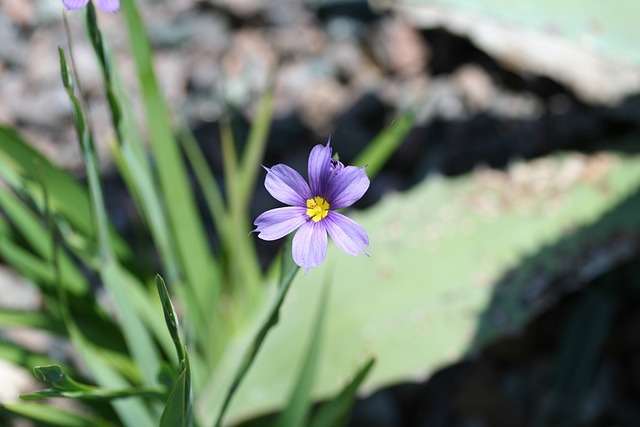
- Description: Blue-eyed Grass (Sisyrinchium spp.) is a genus of perennial plants known for their grass-like foliage and star-shaped blue flowers.
- Characteristics: They have slender, grass-like leaves and small, blue flowers with yellow centers.
- Cultivation: Prefers moist, well-drained soil and full sun to partial shade. Often found in meadows and open woods.
Bluebonnet
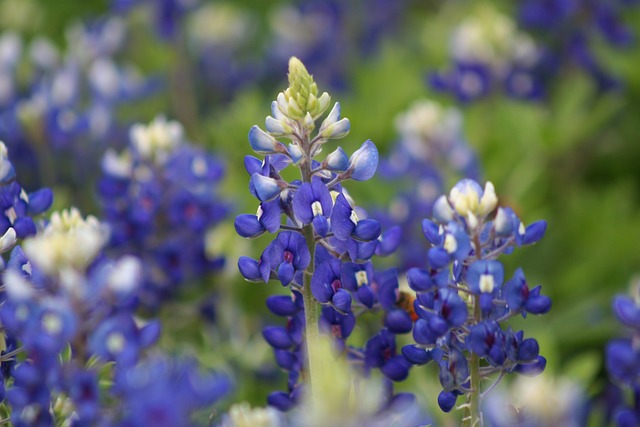
- Description: Bluebonnet (Lupinus texensis) is an annual wildflower known for its bright blue, spiked flower clusters.
- Characteristics: It has palmately divided leaves and tall flower spikes that bloom in spring.
- Cultivation: Thrives in well-drained soil and full sun. The state flower of Texas and often found in prairies and open fields.
Bluebell
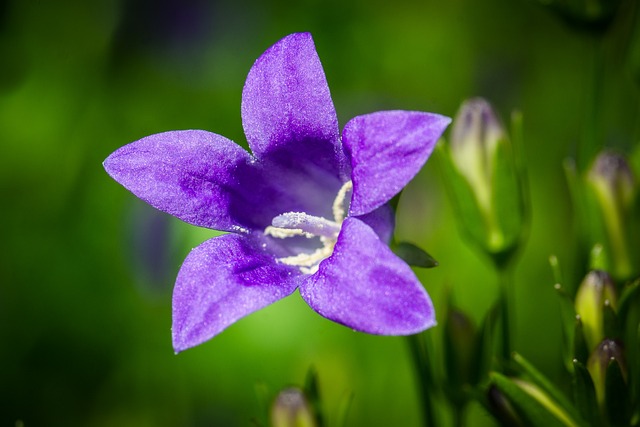
- Description: Bluebell (Hyacinthoides non-scripta) is a perennial plant known for its nodding, bell-shaped blue flowers.
- Characteristics: It has narrow, linear leaves and clusters of fragrant, blue flowers that bloom in spring.
- Cultivation: Prefers moist, well-drained soil and partial to full shade. Often found in woodland areas.
Blue Witch
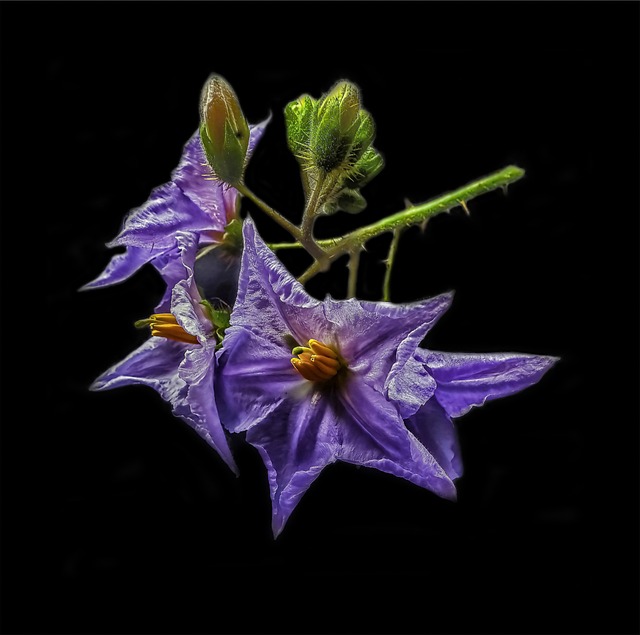
- Description: Blue Witch (Solanum umbelliferum) is a perennial shrub known for its bright blue, star-shaped flowers.
- Characteristics: It has ovate leaves and clusters of small, blue flowers that bloom in spring and summer.
- Cultivation: Prefers well-drained soil and full sun. Often found in chaparral and coastal sage scrub habitats.
Blue Waxflower
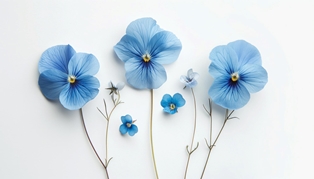
- Description: Blue Waxflower (Cerinthe major ‘Purpurascens’) is an annual plant known for its tubular, blue-purple flowers.
- Characteristics: It has glaucous, blue-green leaves and clusters of tubular flowers that attract pollinators.
- Cultivation: Thrives in well-drained soil and full sun. Often grown in borders and containers.
Blue Water Lily
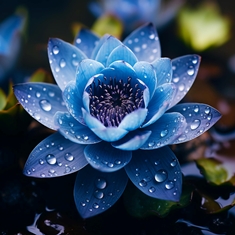
- Description: Blue Water Lily (Nymphaea caerulea) is a tropical aquatic plant known for its fragrant, blue flowers.
- Characteristics: It has broad, floating leaves and large, star-shaped blue flowers that bloom in summer.
- Cultivation: Prefers still or slow-moving water and full sun. Often grown in ponds and water gardens.
Blue Vervain
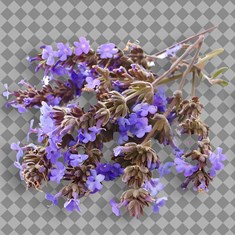
- Description: Blue Vervain (Verbena hastata) is a perennial plant known for its tall spikes of blue-violet flowers.
- Characteristics: It has lance-shaped leaves and slender flower spikes that bloom in late summer.
- Cultivation: Prefers moist, well-drained soil and full sun. Often found in wet meadows and along stream banks.
Blue Trumpet Vine
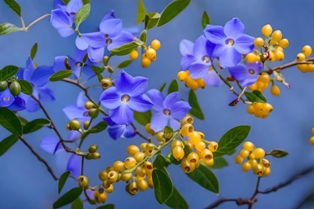
- Description: Blue Trumpet Vine (Thunbergia grandiflora) is a vigorous climber known for its large, trumpet-shaped blue flowers.
- Characteristics: It has heart-shaped leaves and produces clusters of showy, blue flowers.
- Cultivation: Thrives in well-drained soil and full sun to partial shade. Often grown on trellises and fences.
Blue Thunbergia
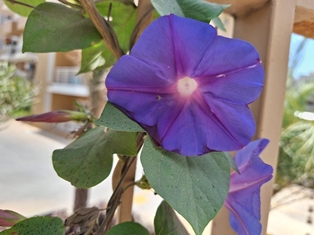
- Description: Blue Thunbergia (Thunbergia grandiflora) is a vigorous climber known for its large, trumpet-shaped blue flowers.
- Characteristics: It has heart-shaped leaves and produces clusters of showy, blue flowers.
- Cultivation: Thrives in well-drained soil and full sun to partial shade. Often grown on trellises and fences.
Blue Throatwort
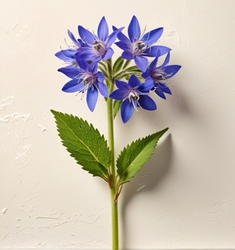
- Description: Blue Throatwort (Trachelium caeruleum) is a perennial plant known for its dense clusters of small, blue flowers.
- Characteristics: It has ovate leaves and produces large, airy flower clusters that bloom in summer.
- Cultivation: Prefers well-drained soil and full sun to partial shade. Often grown in borders and as cut flowers.
Blue Thistle
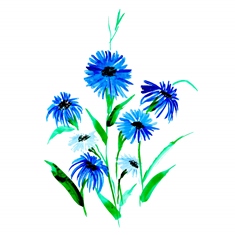
- Description: Blue Thistle (Eryngium spp.) is a genus of perennial plants known for their spiky, blue flowers and bracts.
- Characteristics: They have stiff, spiny leaves and globular flower heads that attract pollinators.
- Cultivation: Thrives in well-drained soil and full sun. Often used in rock gardens and for cut flowers.
Blue Star Creeper
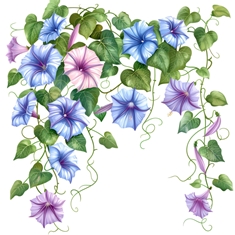
- Description: Blue Star Creeper (Isotoma fluviatilis) is a low-growing, mat-forming perennial known for its tiny, star-shaped blue flowers.
- Characteristics: It has small, oval leaves and produces a carpet of blue flowers throughout the summer.
- Cultivation: Prefers moist, well-drained soil and full sun to partial shade. Ideal for ground cover and between stepping stones.
Blue Star
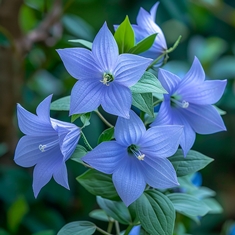
- Description: Blue Star (Amsonia spp.) is a genus of perennial plants known for their star-shaped blue flowers.
- Characteristics: They have narrow, lance-shaped leaves and clusters of blue flowers that bloom in spring.
- Cultivation: Prefers well-drained soil and full sun to partial shade. Often grown in borders and wildflower gardens.
Blue Squill
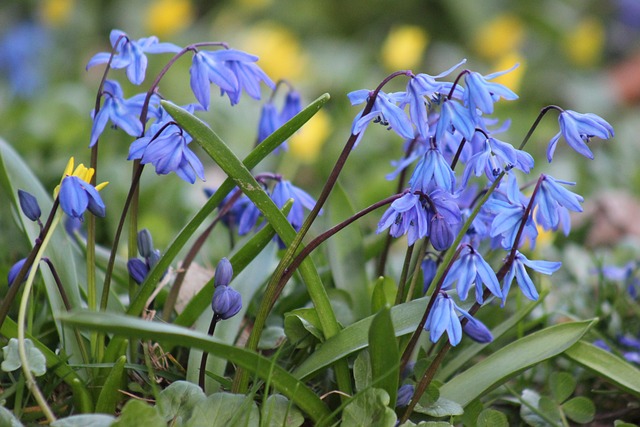
- Description: Blue Squill (Scilla siberica) is a perennial bulb known for its early spring blue flowers.
- Characteristics: It has narrow, strap-like leaves and produces clusters of nodding, bell-shaped blue flowers.
- Cultivation: Prefers well-drained soil and full sun to partial shade. Often grown in rock gardens and woodland areas.
Blue Spirea
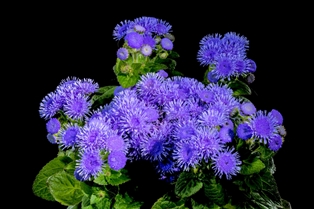
- Description: Blue Spirea (Caryopteris x clandonensis) is a deciduous shrub known for its blue, aromatic flowers.
- Characteristics: It has lance-shaped leaves and clusters of blue flowers that bloom in late summer to fall.
- Cultivation: Thrives in well-drained soil and full sun. Attracts pollinators and ideal for borders.
Blue Sage
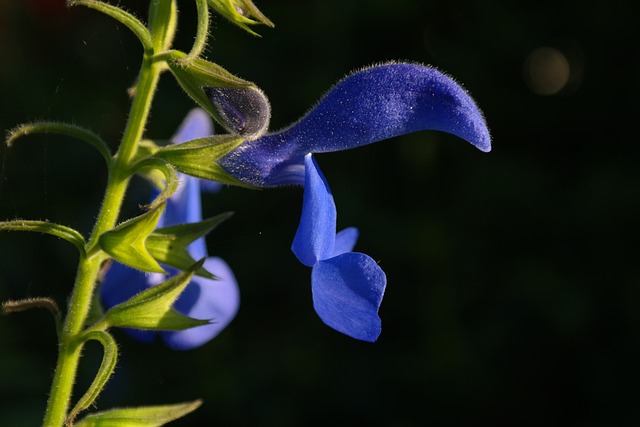
- Description: Blue Sage (Salvia farinacea) is a perennial plant known for its spikes of blue flowers.
- Characteristics: It has lance-shaped leaves and tall flower spikes that bloom throughout the summer.
- Cultivation: Prefers well-drained soil and full sun. Often grown in borders and wildflower gardens.
Blue Primrose
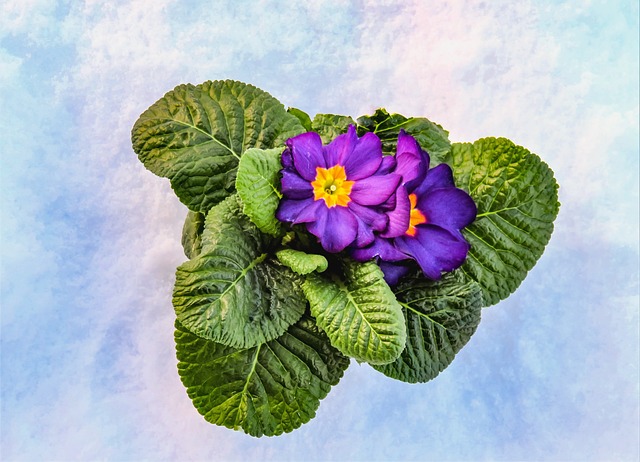
- Description: Blue Primrose (Primula spp.) is a genus of perennial plants known for their early spring blue flowers.
- Characteristics: They have rosettes of basal leaves and clusters of colorful flowers in shades of blue, yellow, pink, and white.
- Cultivation: Prefers moist, well-drained soil and partial to full shade. Often grown in woodland and rock gardens.
Blue False Indigo
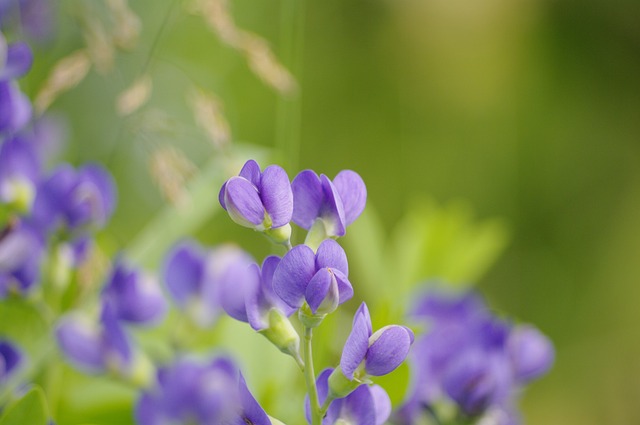
- Description: Blue False Indigo (Baptisia australis) is a perennial plant known for its tall spikes of blue flowers.
- Characteristics: It has trifoliate leaves and produces long, lupine-like flower spikes that bloom in late spring.
- Cultivation: Thrives in well-drained soil and full sun. Often grown in wildflower gardens and for cut flowers.
Blue-eyed Daisy
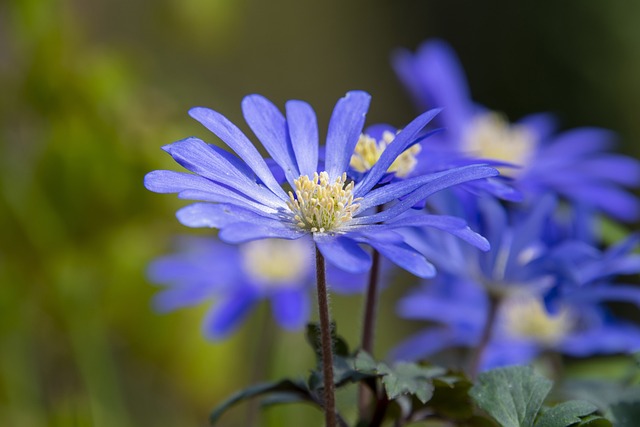
- Description: Blue-eyed Daisy (Arctotis stoechadifolia) is a perennial plant known for its large, daisy-like white flowers with blue centers.
- Characteristics: It has gray-green leaves and produces showy flowers that bloom in spring and summer.
- Cultivation: Prefers well-drained soil and full sun. Often grown in borders and rock gardens.
Blue Daisy
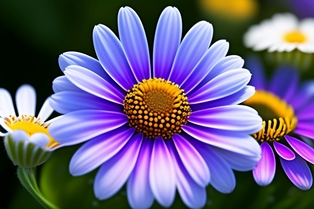
- Description: Blue Daisy (Felicia amelloides) is a perennial plant known for its bright blue, daisy-like flowers with yellow centers.
- Characteristics: It has lance-shaped leaves and produces profuse blooms throughout the summer.
- Cultivation: Prefers well-drained soil and full sun. Often grown in borders and rock gardens.
Bluebells
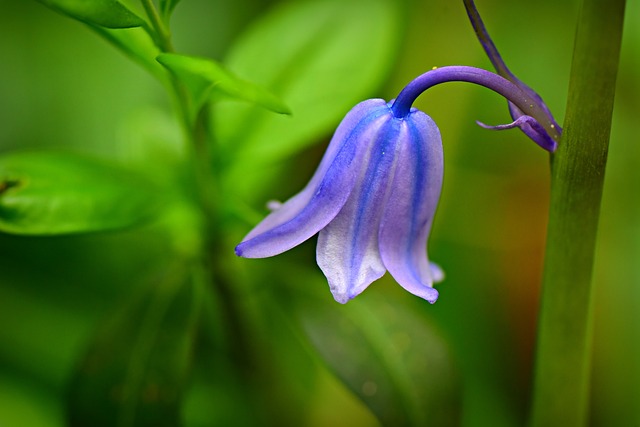
- Description: Bluebells (Hyacinthoides non-scripta) are perennial plants known for their nodding, bell-shaped blue flowers.
- Characteristics: They have narrow, linear leaves and clusters of fragrant, blue flowers that bloom in spring.
- Cultivation: Prefers moist, well-drained soil and partial to full shade. Often found in woodland areas.
Bluebell Creeper
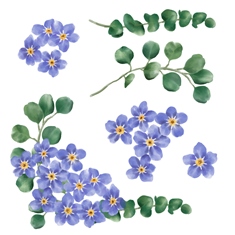
- Description: Bluebell Creeper (Billardiera heterophylla) is a climbing plant known for its bell-shaped, blue flowers.
- Characteristics: It has narrow, lance-shaped leaves and produces clusters of small, blue flowers.
- Cultivation: Thrives in well-drained soil and full sun to partial shade. Often grown on trellises and fences.
Bluebeard
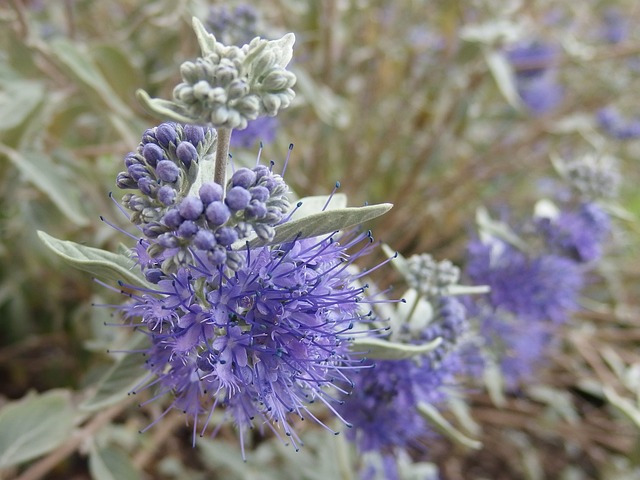
- Description: Bluebeard (Caryopteris x clandonensis) is a deciduous shrub known for its blue, aromatic flowers.
- Characteristics: It has lance-shaped leaves and clusters of blue flowers that bloom in late summer to fall.
- Cultivation: Thrives in well-drained soil and full sun. Attracts pollinators and ideal for borders.
Blue Anise Sage
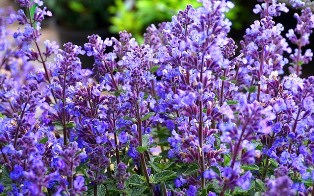
- Description: Blue Anise Sage (Salvia guaranitica) is a perennial plant known for its deep blue, tubular flowers.
- Characteristics: It has aromatic, green leaves and tall flower spikes that bloom in summer.
- Cultivation: Prefers well-drained soil and full sun to partial shade. Often grown in borders and for attracting hummingbirds.
Blunt-leaf Orchid
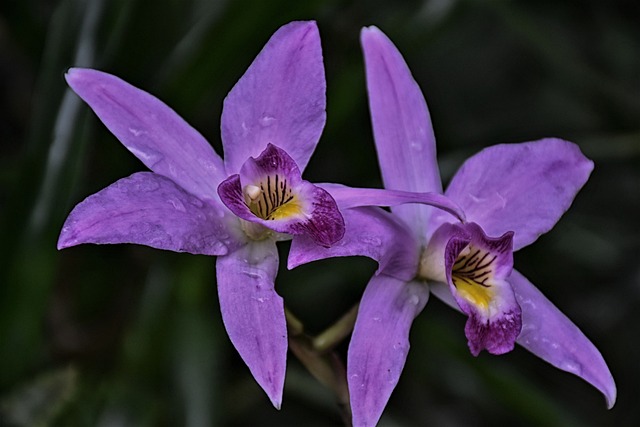
- Description: Blunt-leaf Orchid (Platanthera obtusata) is a terrestrial orchid known for its small, greenish-white flowers.
- Characteristics: It has broad, blunt leaves and produces a spike of small, fragrant flowers in summer.
- Cultivation: Prefers moist, well-drained soil and partial shade. Often found in bogs and wet meadows.
Bloodroot
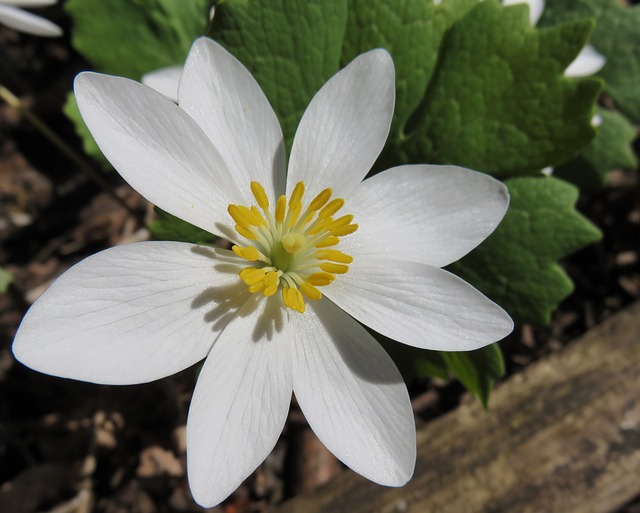
- Description: Bloodroot (Sanguinaria canadensis) is a perennial wildflower known for its white, poppy-like flowers and red sap.
- Characteristics: It has lobed leaves and produces single, white flowers that bloom in early spring.
- Cultivation: Prefers moist, well-drained soil and partial to full shade. Often found in woodland areas.
Bloody Cranesbill

- Description: Bloody Cranesbill (Geranium sanguineum) is a perennial plant known for its deep pink to red flowers.
- Characteristics: It has deeply lobed leaves and produces clusters of cup-shaped flowers in summer.
- Cultivation: Thrives in well-drained soil and full sun to partial shade. Often grown in borders and rock gardens.
Bloodleaf
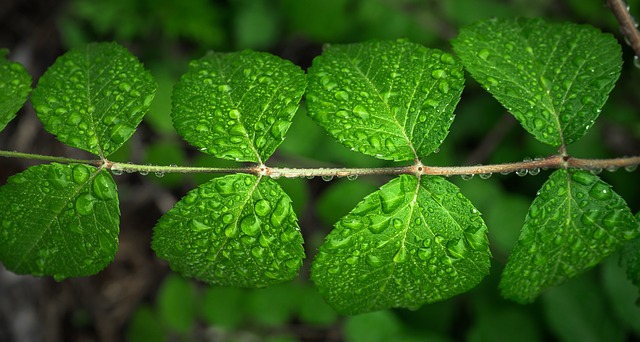
- Description: Bloodleaf (Iresine herbstii) is an annual or perennial plant known for its vibrant, red or purple foliage.
- Characteristics: It has ovate leaves and small, inconspicuous flowers. Grown primarily for its colorful foliage.
- Cultivation: Prefers well-drained soil and full sun to partial shade. Often grown in borders and containers.
Bloodflower
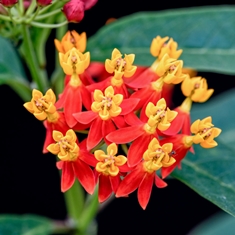
- Description: Bloodflower (Asclepias curassavica) is a perennial plant known for its bright red and orange flowers.
- Characteristics: It has lance-shaped leaves and produces clusters of small, star-shaped flowers.
- Cultivation: Thrives in well-drained soil and full sun. Attracts pollinators and often grown in butterfly gardens.
Blazing Star
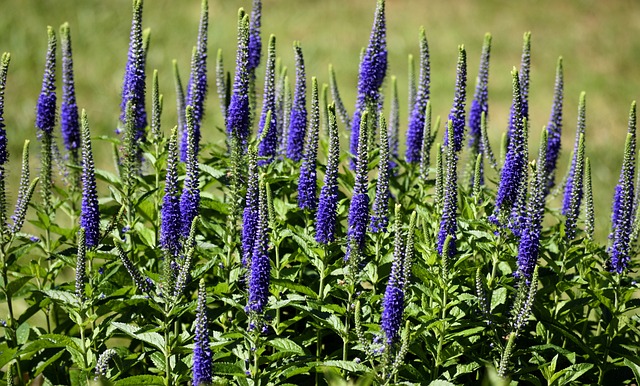
- Description: Blazing Star (Liatris spp.) is a genus of perennial plants known for their tall spikes of purple or white flowers.
- Characteristics: They have grass-like leaves and dense flower spikes that bloom in late summer.
- Cultivation: Prefers well-drained soil and full sun. Attracts pollinators and often grown in wildflower gardens.
Blackthorn
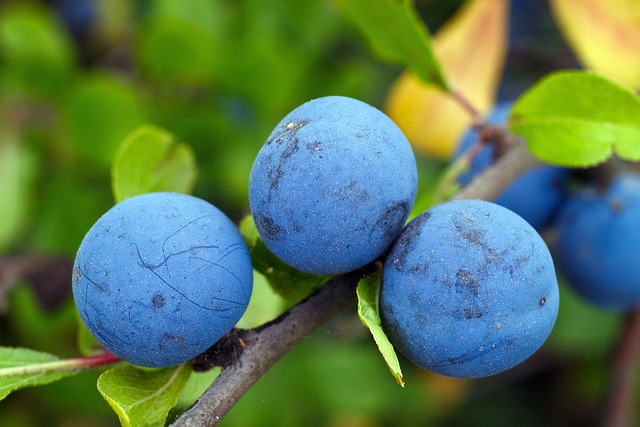
- Description: Blackthorn (Prunus spinosa) is a deciduous shrub known for its white flowers and dark, spiny stems.
- Characteristics: It has ovate leaves and produces small, white flowers followed by dark purple fruits.
- Cultivation: Thrives in well-drained soil and full sun to partial shade. Often used in hedgerows and for wildlife habitats.
Blackberry Lily
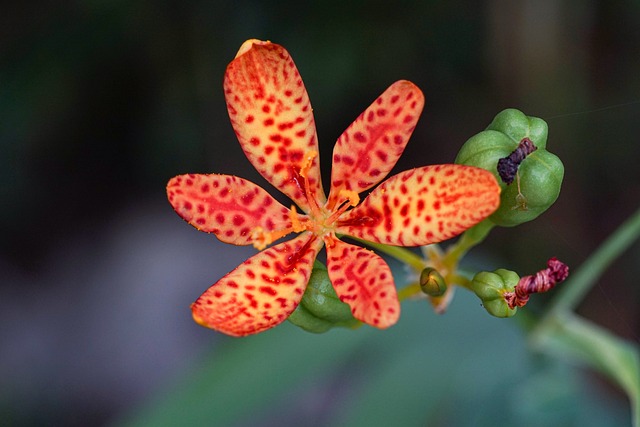
- Description: Blackberry Lily (Iris domestica) is a perennial plant known for its orange, speckled flowers and blackberry-like seed pods.
- Characteristics: It has sword-shaped leaves and produces clusters of star-shaped flowers in summer.
- Cultivation: Prefers well-drained soil and full sun. Often grown in borders and rock gardens.
Blackberry

- Description: Blackberry (Rubus fruticosus) is a perennial shrub known for its thorny stems and edible black fruits.
- Characteristics: It has compound leaves and produces white or pink flowers followed by clusters of juicy berries.
- Cultivation: Thrives in well-drained soil and full sun to partial shade. Often grown for its fruit.
Black-eyed Susan
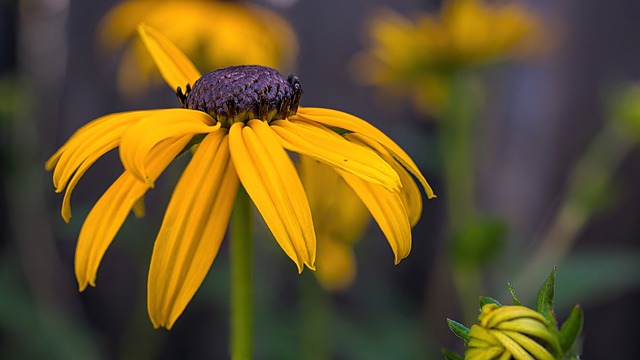
- Description: Black-eyed Susan (Rudbeckia hirta) is a biennial or short-lived perennial known for its bright yellow flowers with dark centers.
- Characteristics: It has rough, hairy leaves and multiple flower stems, each bearing several blooms.
- Cultivation: Thrives in well-drained soil and full sun. Attracts pollinators and ideal for wildflower gardens.
Black-eyed Mary
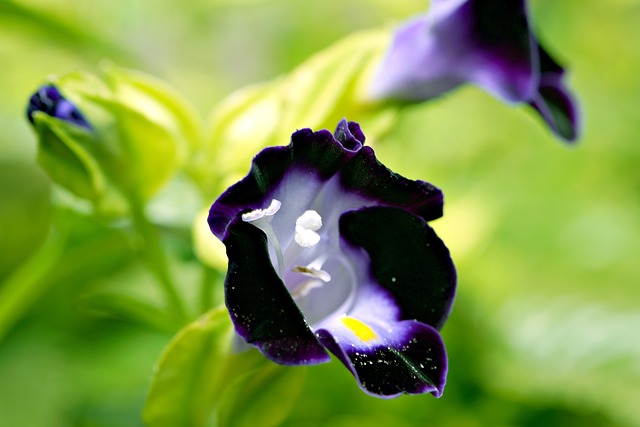
- Description: Black-eyed Mary (Torenia fournieri) is an annual plant known for its tubular, purple and yellow flowers.
- Characteristics: It has ovate leaves and produces clusters of showy flowers throughout the summer.
- Cultivation: Prefers well-drained soil and partial shade. Often grown in borders and containers.
Black-eyed Daisy
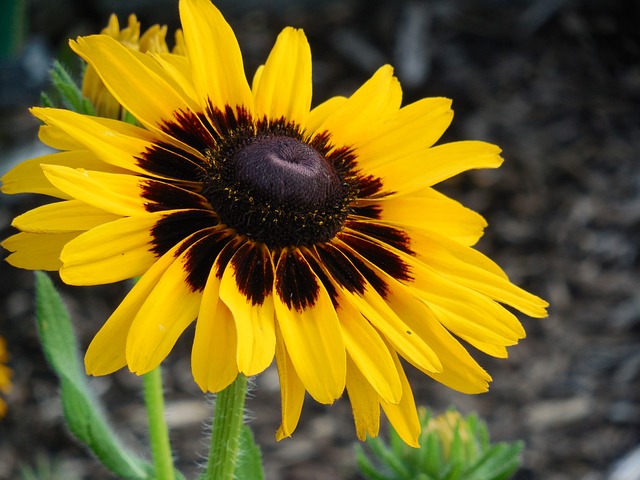
- Description: Black-eyed Daisy (Rudbeckia hirta) is a biennial or short-lived perennial known for its bright yellow flowers with dark centers.
- Characteristics: It has rough, hairy leaves and multiple flower stems, each bearing several blooms.
- Cultivation: Thrives in well-drained soil and full sun. Attracts pollinators and ideal for wildflower gardens.
Black Snakeroot
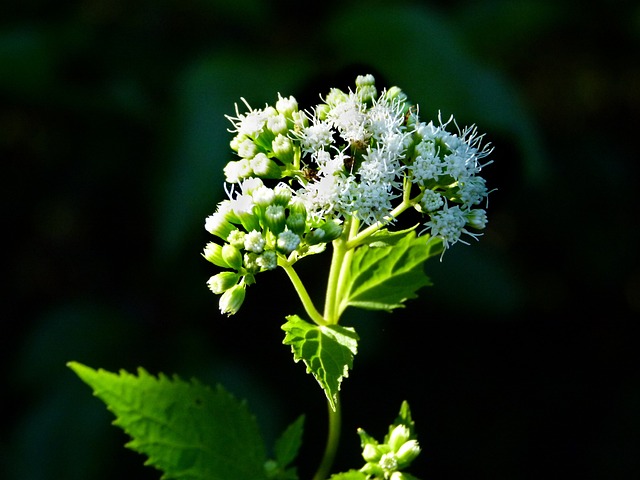
- Description: Black Snakeroot (Actaea racemosa) is a perennial plant known for its tall spikes of white flowers.
- Characteristics: It has compound leaves and produces long, bottlebrush-like flower spikes in summer.
- Cultivation: Prefers moist, well-drained soil and partial to full shade. Often found in woodland areas.
Black Salsify
- Description: Black Salsify (Scorzonera hispanica) is a perennial herb known for its edible, black-skinned roots.
- Characteristics: It has linear leaves and produces yellow, dandelion-like flowers.
- Cultivation: Prefers well-drained soil and full sun. Often grown for its culinary uses.
Black Locust
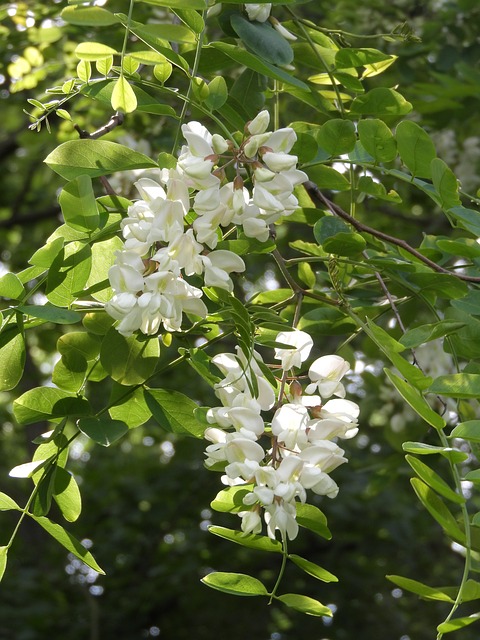
- Description: Black Locust (Robinia pseudoacacia) is a deciduous tree known for its fragrant, white flowers and thorny branches.
- Characteristics: It has pinnate leaves and produces clusters of white, pea-like flowers in spring.
- Cultivation: Thrives in well-drained soil and full sun. Often used in erosion control and as a nitrogen-fixing plant.
Black Hellebore
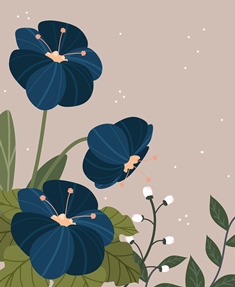
- Description: Black Hellebore (Helleborus niger) is a perennial plant known for its dark, leathery leaves and early spring flowers.
- Characteristics: It has deeply lobed leaves and produces clusters of nodding, white or pink flowers.
- Cultivation: Prefers moist, well-drained soil and partial to full shade. Often grown in woodland gardens.
Black-Eyed Susan Vine
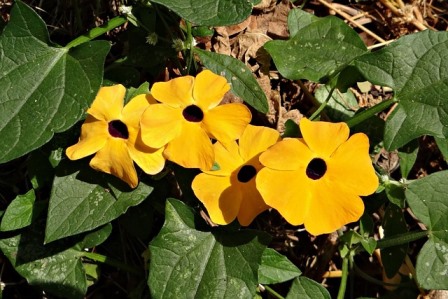
- Description: Black-Eyed Susan Vine (Thunbergia alata) is a vigorous climber known for its bright yellow or orange flowers with dark centers.
- Characteristics: It has heart-shaped leaves and produces clusters of showy flowers throughout the summer.
- Cultivation: Thrives in well-drained soil and full sun to partial shade. Often grown on trellises and fences.
Black Nightshade
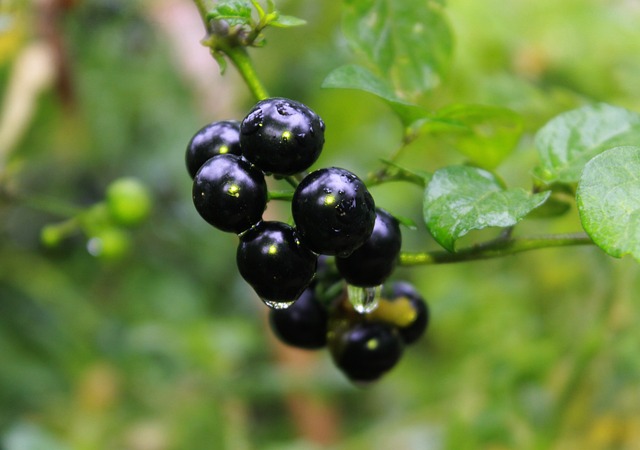
- Description: Black Nightshade (Solanum nigrum) is an annual or short-lived perennial plant known for its small, black berries.
- Characteristics: It has ovate leaves and produces clusters of small, white flowers followed by black berries.
- Cultivation: Prefers well-drained soil and full sun to partial shade. Often found in waste areas and disturbed soils.
Black Mondo Grass
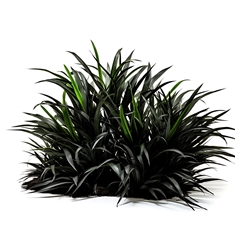
- Description: Black Mondo Grass (Ophiopogon planiscapus ‘Nigrescens’) is a perennial ground cover known for its black, grass-like leaves.
- Characteristics: It has narrow, arching leaves and produces small, lilac flowers followed by black berries.
- Cultivation: Prefers well-drained soil and partial shade. Often used in borders and rock gardens.

